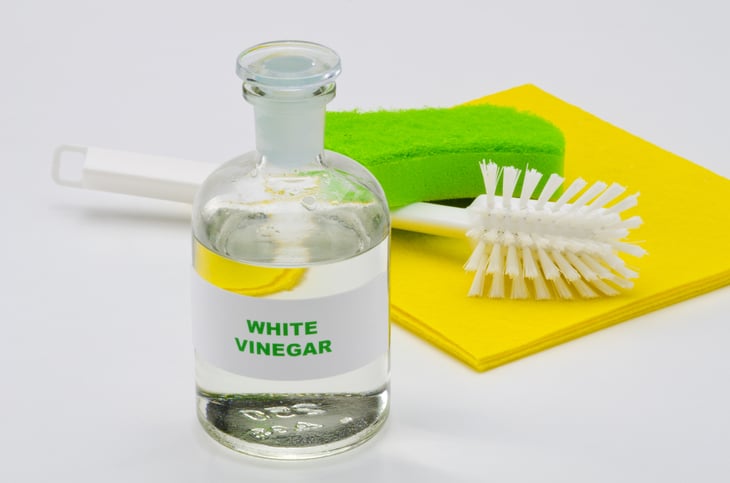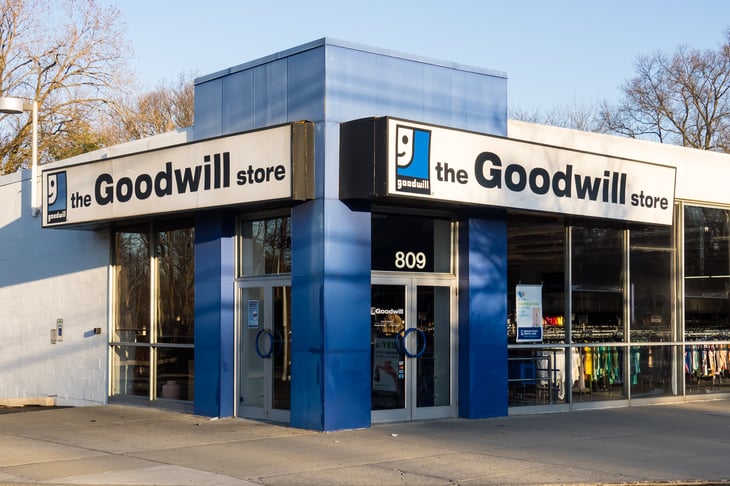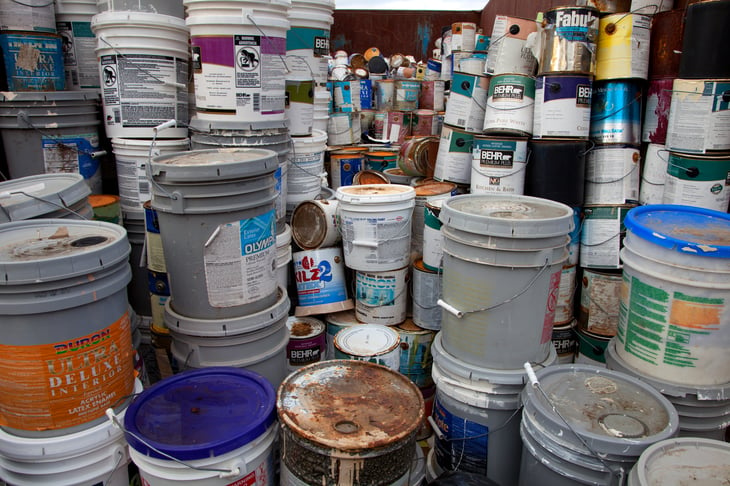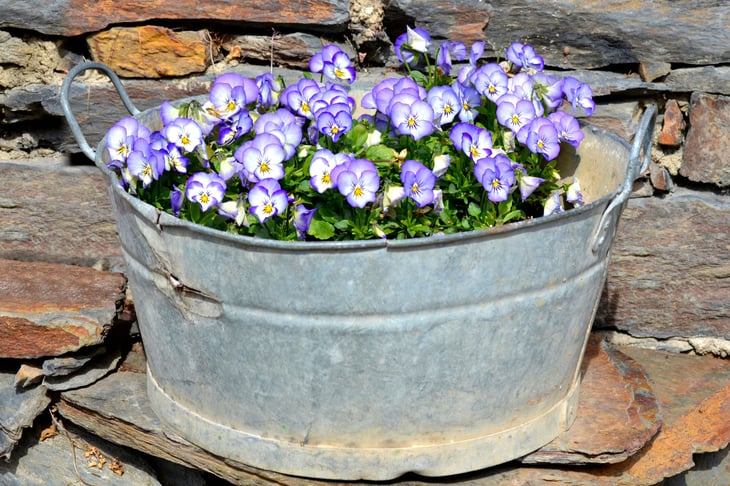
Once you’ve moved in to that new house, condo or apartment, you’ll naturally be interested in making it your own. Doing so can cost a bundle, though, especially if you watch a lot of home improvement shows or read a lot of nesting blogs.
Don’t believe everything you see and read. You can live just as long and die just as happy even if every room doesn’t contain wallpaper borders, multiple mirrors and bushels of throw pillows with cute sayings on them. Similarly, the garden doesn’t have to be professionally landscaped to be an attractive, inviting place.
Remember, the people who make a living in the home-and-garden space have a vested interest in selling you stuff – either their own specialty items and services or the sponsors’ products. Seriously: You don’t need a feng shui master for the crawl space!
Half the fun of owning (or renting) a space is making it a comfortable, pleasing place to live, but you don’t have to go broke doing it. Use these tactics to make a space that’s uniquely yours, affordably:
Stop buying chemicals

Keeping your home clean and fresh doesn’t necessarily mean buying a bunch of products whose ingredients you can’t pronounce. The following articles provide easy and frugal workarounds:
- “Never Buy These Expensive Cleaning Supplies Again“
- “82 Amazing and Environmentally Friendly Uses for Vinegar“
- “77 Uses for Baking Soda (and How It Can Save Your Life)“
You also don’t need to spend a bundle on cleaning tools. For example, the “Never Buy These Expensive Cleaning Supplies Again” article shows you how to hack a Swiffer Wet Jet refill for a couple of pennies, rather than paying $9 to $14 per bottle.
Dollar store scrub brushes and sponges do a pretty good job, and cost less than the same products elsewhere. The dollar store also has name-brand products, if you think that a sink isn’t clean unless you’ve hit it with Comet.
Fix what’s broken

The vacuum cleaner quit working. Your washing machine won’t spin. A dresser drawer squeaks whenever it opens. The front-door lock is balky.
Don’t replace things automatically — see if you can fix them first. Two suggestions:
Repair Café, which operates in 22 states and some Canadian provinces, facilitates meet-ups where folks can learn to fix appliances, bikes, lamps, toys and other items.
YouTube videos! No matter what you need to fix, there’s likely to be a tutorial for it.
Shop thrift and consignment stores

Secondhand shops aren’t only about inexpensive books and clothes. You’ll also find furniture, decor, garden items, tools and other things that help make a house a home.
Some thrift and consignment shops are better than others, obviously, so the selection will be all over the map. But that’s the fun of it! The thrill of the hunt makes finding that affordable table or already-assembled bookcase even more satisfying.
Pro tip: Sometimes these emporia have half-price days. That’s when you can really clean up.
Visit the Habitat ReStore

Habitat for Humanity has hundreds of ReStores, which are thrift shops for DIYers. There’s an ever-changing collection of new and gently used building materials, furniture, appliances, hardware, lighting, paint and more. The items come from contractors, remodelers and stores, and the savings can be huge. Think “a door for $7.50” or “cans of spray paint for a buck.”
As with all thrift stores, you may not find exactly what you want on the first try, so stop by regularly if you have a project in mind.
Pallet projects

First, Google “pallet projects” (or look on Pinterest) and you’ll get an eyeful of amazing things created from used wooden shipping pallets — sofas, garden potting benches, bookcases, shelving, tables, bed frames, dog houses and outdoor furniture, to name just a few.
Next: Find some pallets. Do an online search for “free pallets” or check Freecycle and/or Craigslist. Companies want to get rid of these things to avoid paying disposal fees. That means a free supply of wood for those Adirondack chairs.
Pay with free gift cards

Paint, area rugs, potting soil, energy-efficient bulbs and the like can put a dent in the budget. Gift cards to such retailers as Home Depot, Lowe’s, Amazon and Target will give you a nice head start toward the repair/improvements you want. Here are a few options for finding these freebies:
- If you have a rewards credit card, use points to order gift cards. Or take the cash option and put that money toward a project.
- Join a rewards program like MyPoints and Swagbucks. (Pro tip: Swagbucks has a PayPal option as well as a bunch of gift cards from which to choose. In other words, cash for your next project.)
- Take surveys for money, and put the gift cards and/or cash you earn to work on your home and garden projects.
Look for free stuff

Although the Freecycle Network doesn’t operate everywhere, it can be a terrific resource for things like furniture, tools, home decor and garden items. Use the link to see if there’s a chapter of the grassroots nonprofit organization in your area.
The classified ads website Craigslist has a “free” section as well. You might luck out.
Look for a Buy Nothing group in your neighborhood. This concept is a hyper-localized version of Freecycle, through which members share “gifts” and “asks” via private Facebook pages.
The free remodel

You’re tired of the way your place looks, but you can’t afford to redecorate. Or maybe you’ve just decided that other financial goals are a bigger priority.
So don’t remodel — just move stuff around. The little side table from the spare bedroom might work perfectly in the entryway. If you’ve got groups of decorative items, break them up; if you’ve got a lot of single things, group them. Put lamps from a bedroom into the living room, or vice versa.
Remove everything from your walls and surfaces, and then move the elements from room to room. (Hint: You don’t have to put all of it back.) Switch out curtains from one room to another. And so on.
You could also ask relatives and friends if they have any home and garden items they aren’t using, or any pieces they’d like to trade. That loveseat that no one uses might be swapped for a big table that’s perfect for game night.
Go to the dump

Some landfills set aside areas for building materials, chemicals, cleaning and gardening supplies, and even furniture and appliances that people are throwing out. My partner and I have picked up paint, fertilizer, oil-based stain, slug repellent, an organic anti-fungicide, Old English oil, ammonia, cleanser, WD-40 and other useful things absolutely free.
Our city, like some others in the U.S., has started a composting program: You can drop off food scraps and lawn clippings and take home a bucket of rich, soil-enhancing compost. Call your own municipal government to find out what’s available at the landfill, or elsewhere.
Cheap (or free) plants

Whether gardening for food or for landscaping, or creating an indoor landscape of houseplants, a few simple tactics can greatly reduce the cost:
- Save seeds: From your flowers and veggies, or from someone else’s.
- Be part of a seed swap: Look for a local garden club and inquire about trading seeds with other members. Check the Garden Club of America website for groups in your area.
- Hit the dollar store: I got four-for-a-buck seed packets from The Dollar Tree. The packages were small, but produced a lot of carrots, green beans, beets, lettuce and spinach.
- Start your own plants: Those four- and six-packs of flower and veggie starts from the nursery really add up fast. Use some of those cheap or free seeds to create your own bedding plants.
- Make cuttings/divide perennials: Ask relatives and friends whether you can create new growths from their established plants.
Get creative about planters

Whether you’re planting flowers or creating containerized veggie gardens, you don’t need to pay a bundle:
Check Freecycle, Craigslist and the Buy Nothing group to see what’s being given away. You could also put up a “seeking planters” request in either place.
Do an online search for “DIY planters.” For example, you can grow salad greens in sections of rain gutter affixed to the side of a shed, or build a stepladder-like contraption with, yes, more of those discarded pallets.
Ask the (no-charge) experts

Got a problem with your lawn, garden, shrubs or trees? Wondering how to get rid of garden (or household) pests? The Cooperative Extension Services can help. Contact the local CES office for expert assistance.
Another helpful group is the Master Gardeners Association, whose members give advice and also present lectures and programs to share plant lore. Both organizations can advise you on such issues as the best plants for your area, how to avoid over-watering your lawn, and where to find free mulch and/or compost.
Watch the thermostat

Turn the heat down a few degrees and the air conditioner up a few degrees. This doesn’t necessarily mean suffering. Tactics from these Money Talks News pieces can help you do this comfortably:
Hang on to your heat (or your AC)

Ask your local utility companies if you can get an energy audit. A utility worker could point out simple ways to reduce your home’s energy use, such as weatherstripping and buying more efficient light bulbs. See if any grants or low-interest loans are available to help you make energy improvements.
At the end of 2016, federal income tax credits and other incentives for certain residential energy efficiency purchases expired. Some were renewed in February 2018 with the signing of the Bipartisan Budget Act. For more information, visit the EnergyStar website.
Here are more ideas: “19 Free or Cheap Ways to Cut Your Winter Energy Bills.”
Review your insurance

If you aren’t bundling your homeowners insurance with your auto and life insurance policies, call your agent now. Ask what kind of deal you can get.
While you’re at it, tell the agent about any changes that have taken place since you bought your policy. Perhaps you sold the coin collection, or decluttered your place and now have fewer things that need insuring.
Finally, ask about the pros and cons of raising the homeowners insurance deductible to reduce the annual premium.
For more ideas, check out: “8 Foolproof Ways to Slash the Cost of Homeowners Insurance.”
What home and garden tips do you have? Share them in comments below or on our Facebook page.




Add a Comment
Our Policy: We welcome relevant and respectful comments in order to foster healthy and informative discussions. All other comments may be removed. Comments with links are automatically held for moderation.